寻金记|In Search of The Gold
混合媒介:硫化钡图片,宣绒布墙纸,不锈钢,树脂3D打印,陶瓷,高清有声影像5:26min ,2024
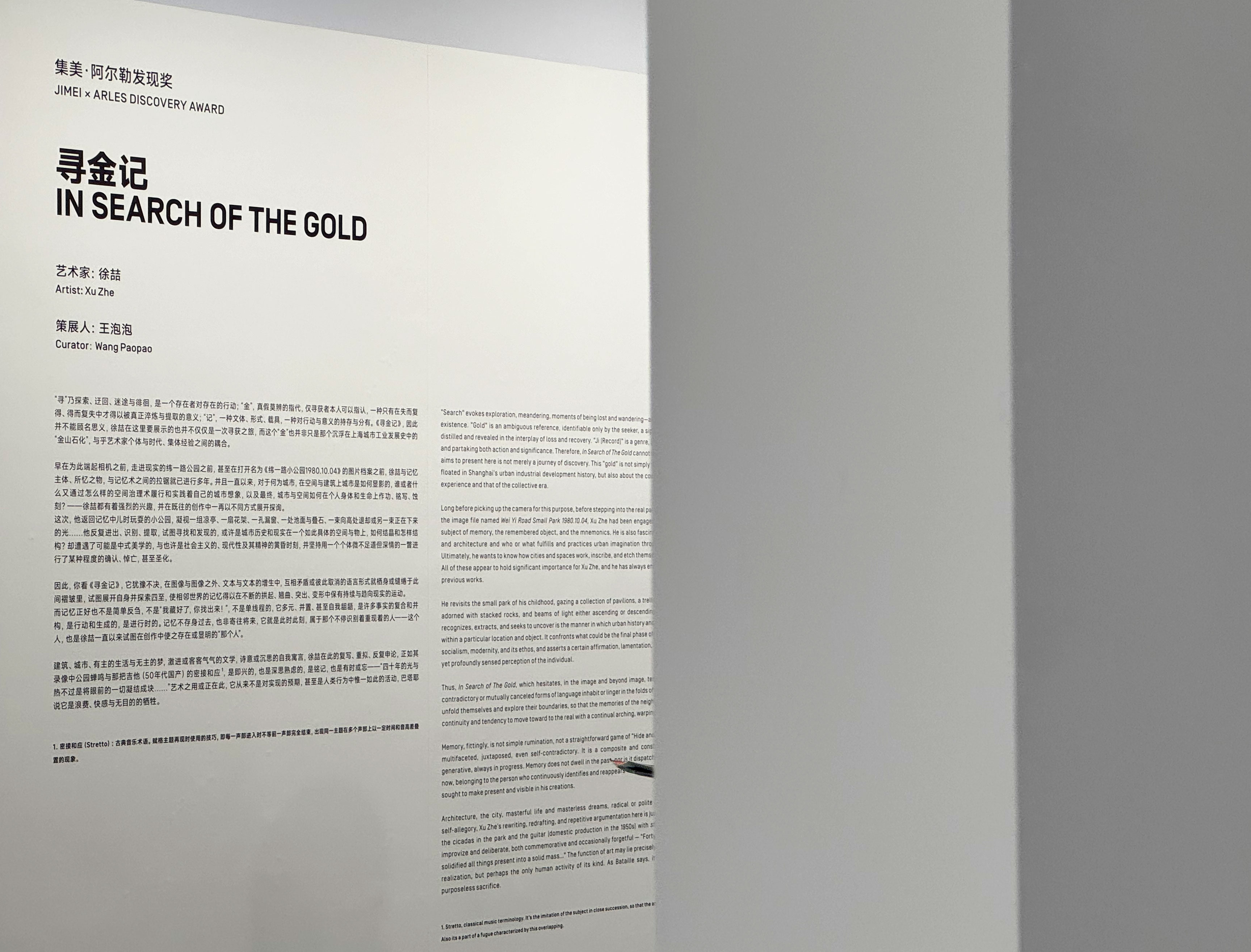
关于《寻金记》
“寻”乃探索、迂回、迷途与徘徊,是一个存在者对存在的行动;“金”,真假莫辨的指代,仅寻获者本人可以指认,一种只有在失而复得得而复失中才得以被真正淬炼与提取的意义;“记”,一种文体、形式、载具,一种对行动与意义的持存与分有。《寻金记》,因此并不能顾名思意,徐喆在这里要展示的也并不仅仅是一次寻获之旅,而这个“金”也并非只是那个沉浮在上海城市工业发展史中的“金山石化”,与乎艺术家个体与时代、集体经验之间的耦合。
早在为此端起相机之前,走进现实的纬一路公园之前,甚至在打开名为《纬一路小公园1980.10.04》的图片档案之前,徐喆与记忆主体、所忆之物,与记忆术之间的拉锯就已进行多年。并且一直以来,对于何为城市,在空间与建筑上城市是如何显影的,谁或者什么又通过怎么样的空间治理术履行和实践着自己的城市想象,以及最终,城市与空间如何在个人身体和生命上作功、铭写、蚀刻?——徐喆都有着强烈的兴趣,并在既往的创作中一再以不同方式展开探询。 这次,他返回记忆中儿时玩耍的小公园,凝视一组凉亭、一扇花架、一孔漏窗、一处池面与叠石、一束向高处退却或另一束正在下来的光……他反复进出、识别、提取,试图寻找和发现的,或许是城市历史和现实在一个如此具体的空间与物上,如何结晶和怎样结构?却遭遇了可能是中式美学的,与也许是社会主义的、现代性及其精神的黄昏时刻,并坚持用一个个体微不足道但深情的一瞥进行了某种程度的确认、悼亡,甚至圣化。
因此,你看《寻金记》,它犹豫不决,在图像与图像之外、文本与文本的增生中,互相矛盾或彼此取消的语言形式就栖身或缱绻于此间褶皱里,试图展开自身并探索四至,使相邻世界的记忆得以在不断的拱起、翘曲、突出、变形中保有持续与趋向现实的运动。 而记忆正好也不是简单反刍,不是“我藏好了,你找出来!”,不是单线程的,它多元、并置、甚至自我龃龉,是许多事实的复合和并构,是行动和生成的,是进行时的。记忆不存身过去,也非寄往将来,它就是此时此刻,属于那个不停识别着重现着的人——这个人,也是徐喆一直以来试图在创作中使之存在或显明的“那个人”。
建筑、城市、有主的生活与无主的梦,激进或客客气气的文学,诗意或沉思的自我寓言,徐喆在此的复写、重拟、反复申论,正如其录像中公园蝉鸣与那把吉他(50年代国产)的密接和应1,是即兴的,也是深思熟虑的,是铭记,也是有时或忘——“四十年的光与热不过是将眼前的一切凝结成块……”艺术之用或正在此,它从来不是对实现的预期,甚至是人类行为中惟一如此的活动,巴塔耶说它是浪费、快感与无目的的牺牲。
1. 密接和应(Stretto):古典音乐术语。赋格主题再现时使用的技巧,即每一声部进入时不等前一声部完全结束,出现同一主题在多个声部上以一定时间和音高差叠置的现象。
--王泡泡
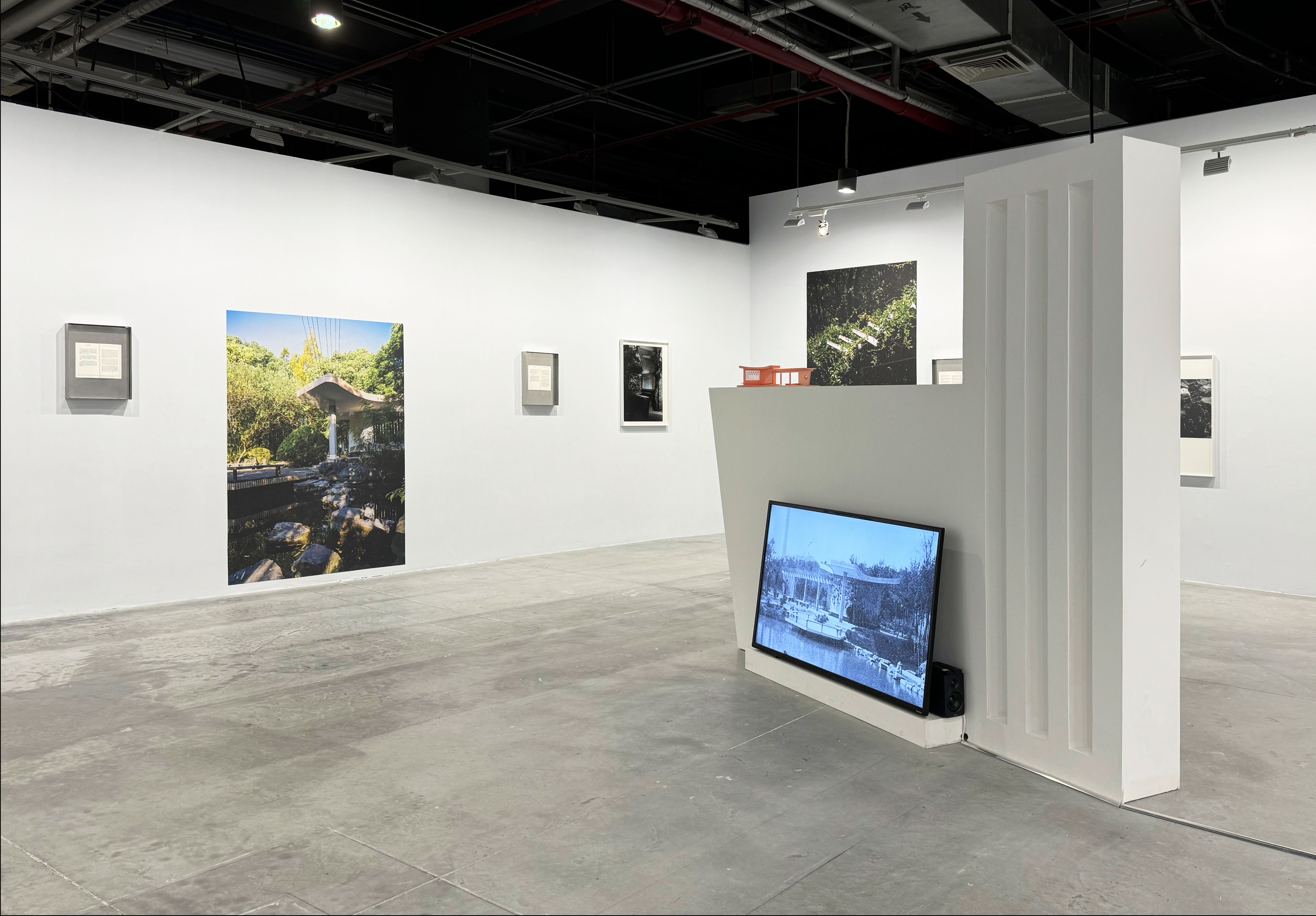
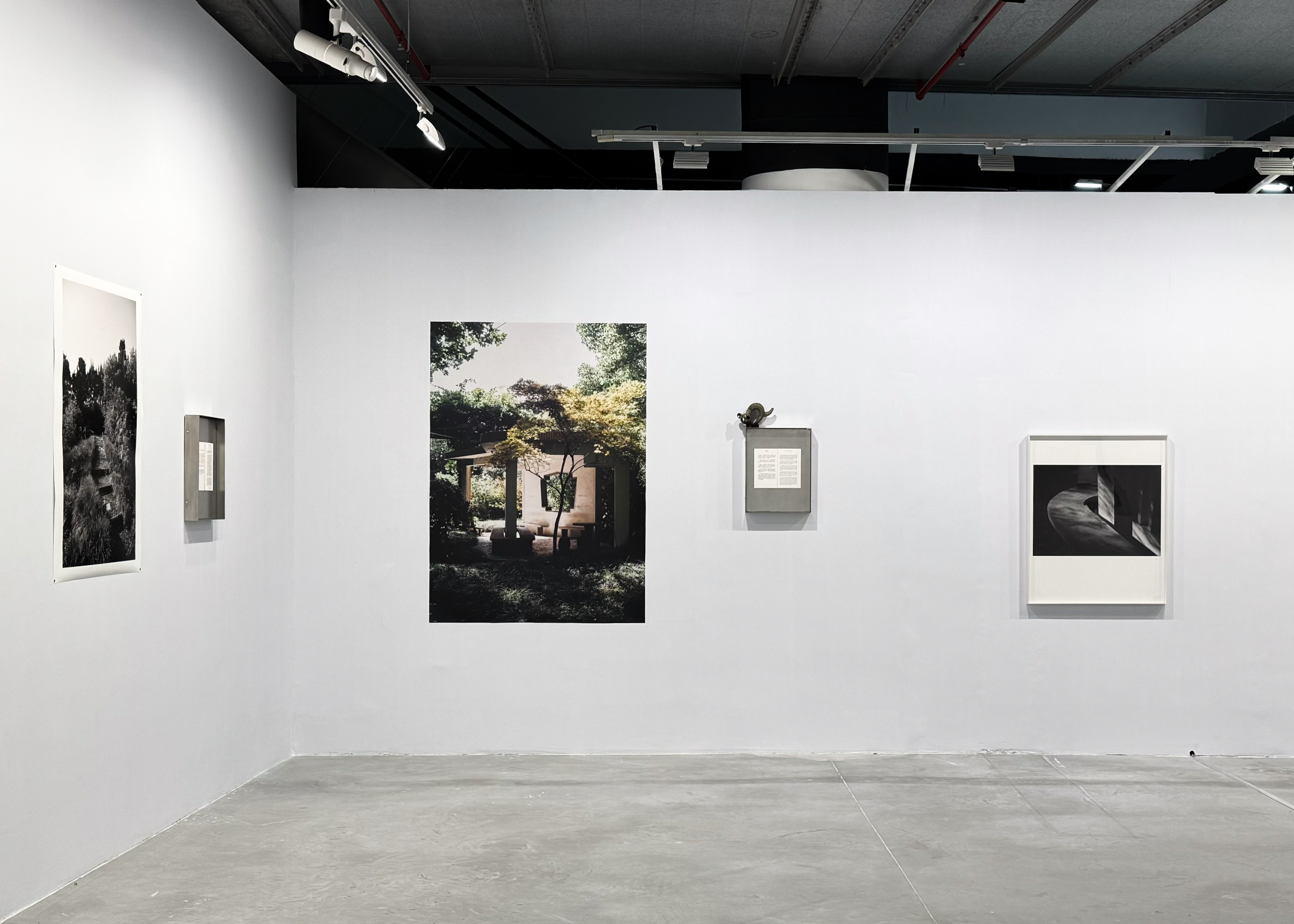
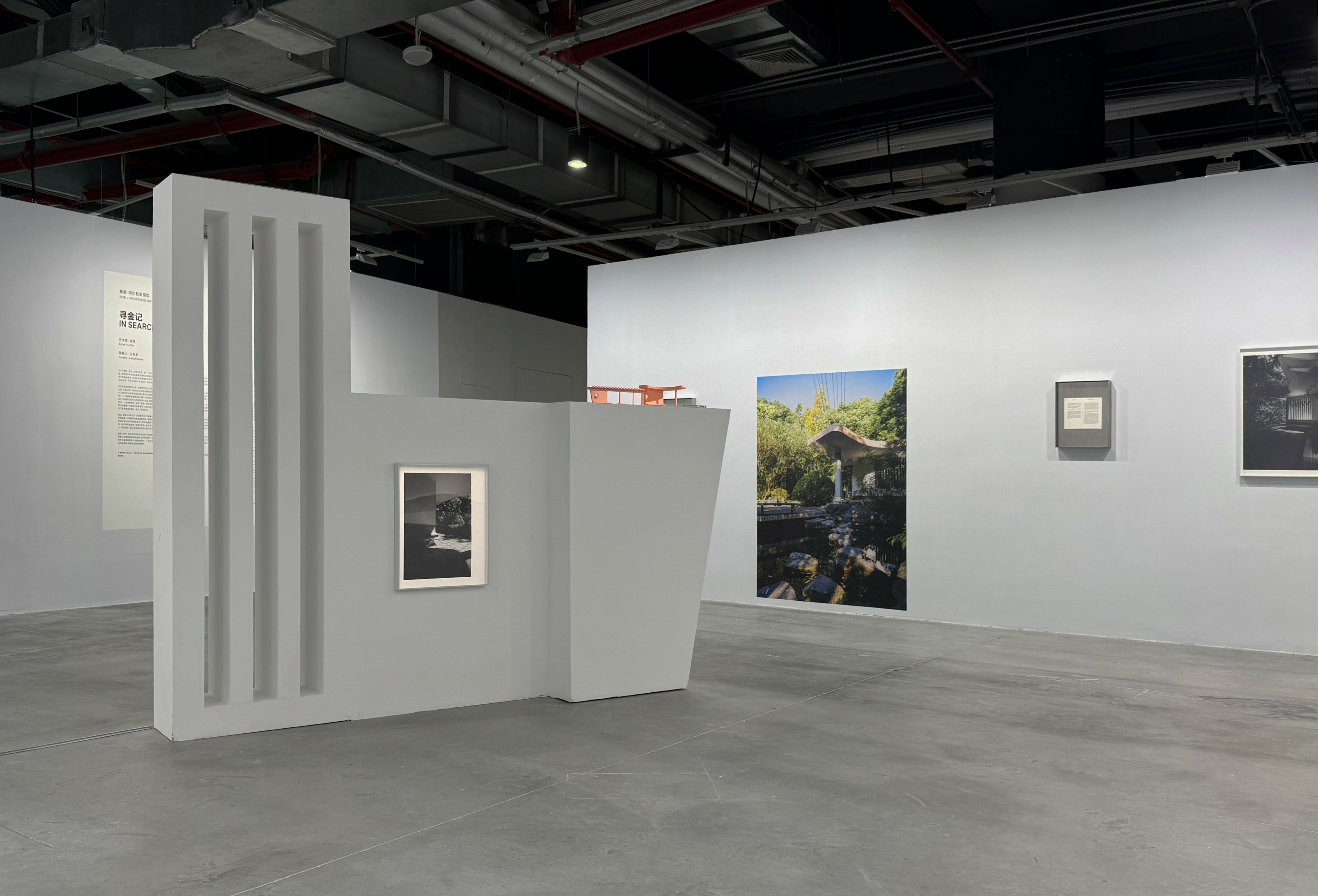
厦门集美艺术中心现场
《寻金记》是一次对建成于十年期间的工业新城“上海金山石化”发展历程的回望,通过对一个公园(纬一路小公园)的细致观察,去重估社会主义建筑遗产的美学与人本价值。尝试去读解一个生动鲜活的人(一位园林建筑师?一位城市规划者?)的工作痕迹,用具身视角去切入,寻回,整理属于我们自己的现代性脉络(工业、城市、人居建筑)。 在2024年“集美阿尔勒发现奖”的展览现场我使用了7段写作的文本,将它们置于手工完成的不锈钢框做为贯穿展览的主要元素。而摄影图像则作为实证的,同样是美学的参照物与文本并行,以此回应这一时期工厂·人居综合体建筑群中所独有的质感。
"In Search of The Gold" is a retrospective look at the development of Shanghai Jinshan Petrochemical, an industrial new town built during the Cultural Revolution. Through a detailed observation of a small park (Weiyilu Park), the project aims to reassess the aesthetic and humanistic value of socialist architectural heritage. By attempting to decipher the work of a vibrant individual (a landscape architect? an urban planner?), the project employs an embodied perspective to delve into and recover our own modern trajectory (industry, city, residential architecture). At the 2024 Jimei Arles Discovery Award exhibition, I used seven written texts, placed in handmade stainless steel frames, as the main elements throughout the exhibition. Photographic images, serving as empirical evidence, also ran parallel to the texts as equally aesthetic references, responding to the unique texture of the factory/residential complex during this period.
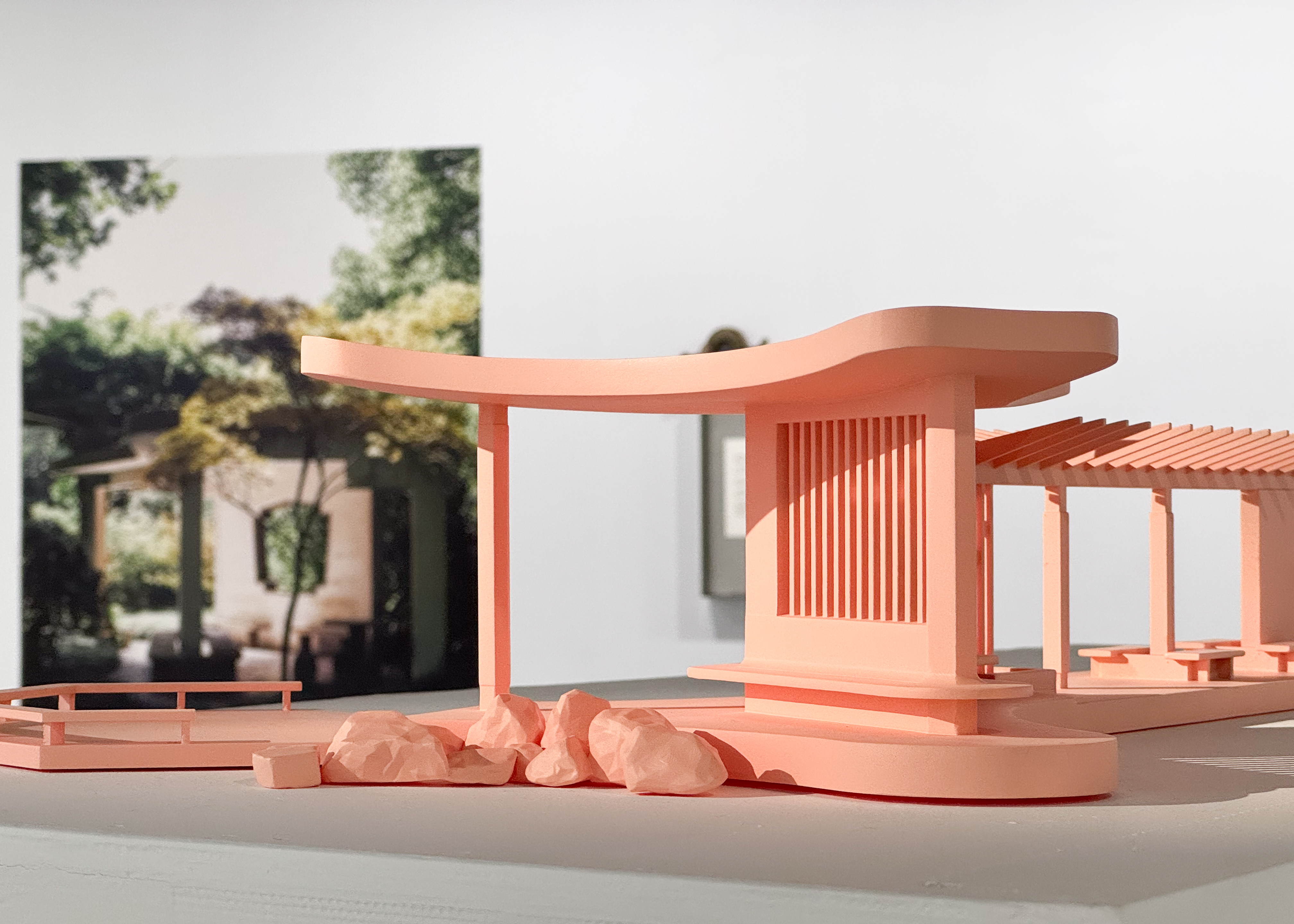
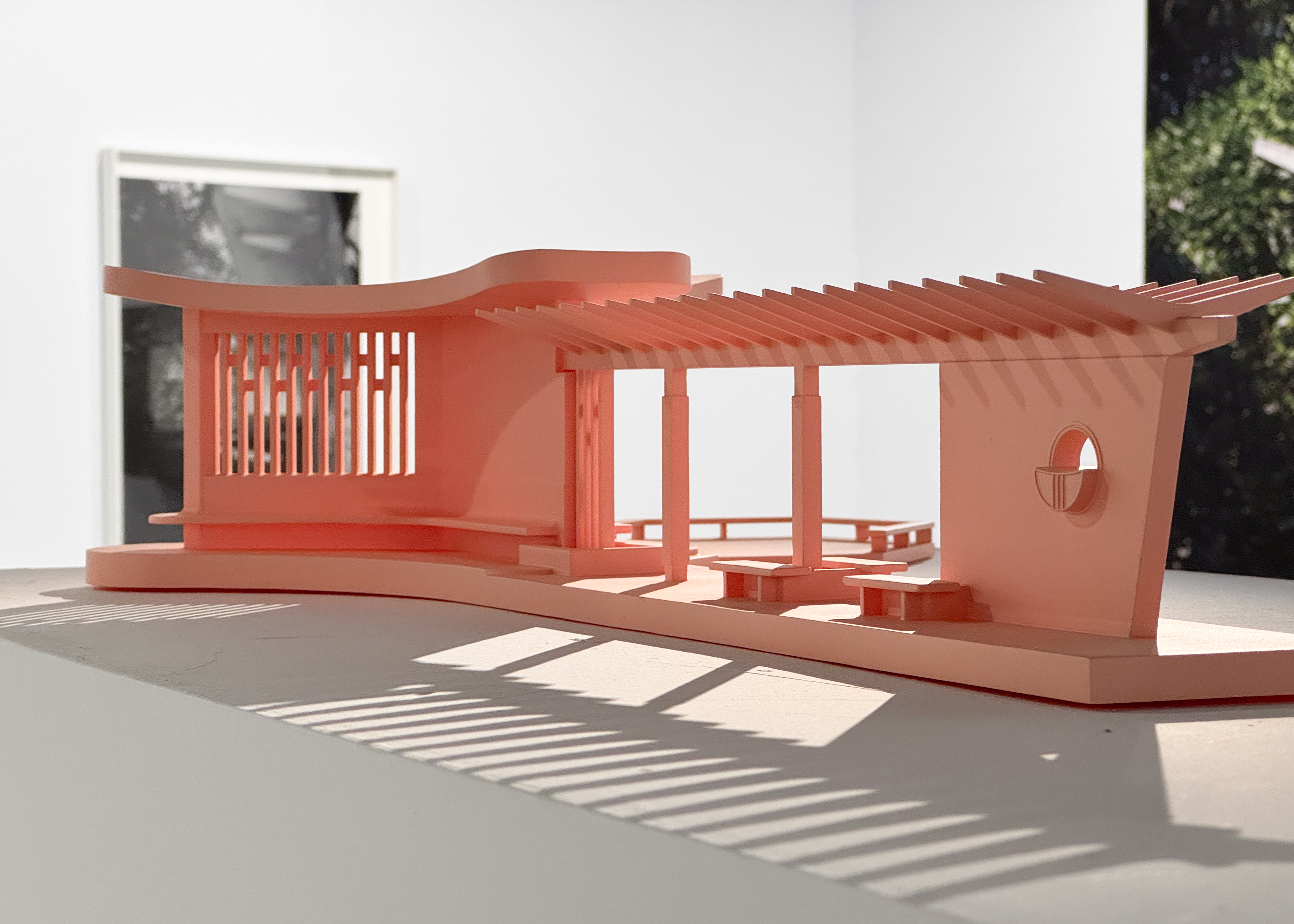
展览现场 - 公园凉亭模型
在这一“回望”中,我并不希望仅将视角停驻在工业城市发展的线性描绘,我更感兴趣的是本土工业现代化演进背后的行为主体-“人”。在过往作品中我总是试想着去找到那些消隐于历史记忆中的个体,去复现他们存在的痕迹。在“寻金”项目最初的动机里也同样如此:在对于公园建筑的观察中,那位藏于背后的设计者引起了我的注意,或许他(她)独特的选择所折射出的个人经历值得我再一次从“个体”的角度去解读时代的变迁。然而个人能力与现实条件所限(档案缺失),或许永远无法寻回某个具体的人,至少在前期考察中关于作者的信息始终没能找到。但在这一过程中却一再将我置身于岔路:小公园尽管只是这一巨大体量的工业机器的边缘附属,却在它的形态,构造上无不凸显着对“人”的尊重与关照。同样的,对建筑语言的读解也将我置身于本土现代建筑的演进浪潮中——现代的、国际的、民族的,在风格与实践的探索与试炼中似乎隐约的找到了一套独特的现代建筑语汇,然而令人扼腕的却是这一昙花一现的光芒被其后汹涌而至的时代变迁所熄灭。
"Looking back" does not mean simply focusing on the linear depiction of industrial development. I am more interested in the human actors behind the evolution of China's industrial modernization. In my previous works, I have always tried to find individuals who have faded from historical memory and to recreate their existence. The initial motivation for this project was no different: while observing the park's architecture, I became curious about the designer behind it—I was drawn to further interpret the personal experiences reflected in his or her unique choices. However, due to limited resources and the lack of available archives, information about the author could not be found. Perhaps we will never be able to find back that specific person, but in this process, I have repeatedly found myself at a crossroads: although the small park is merely a marginal appendage of this massive industrial machine, its form and structure clearly demonstrate respect and care for people. This interpretation of architectural language also places me in the evolutionary wave of modern Chinese architecture—modern, international, and national. In the exploration and trials of style and practice, designers in the late 1970s seemed to have vaguely found a unique set of modern architectural vocabulary, but it is a pity that this fleeting attempt only emitted a faint glimmer before being extinguished by the subsequent tumultuous changes of the times.

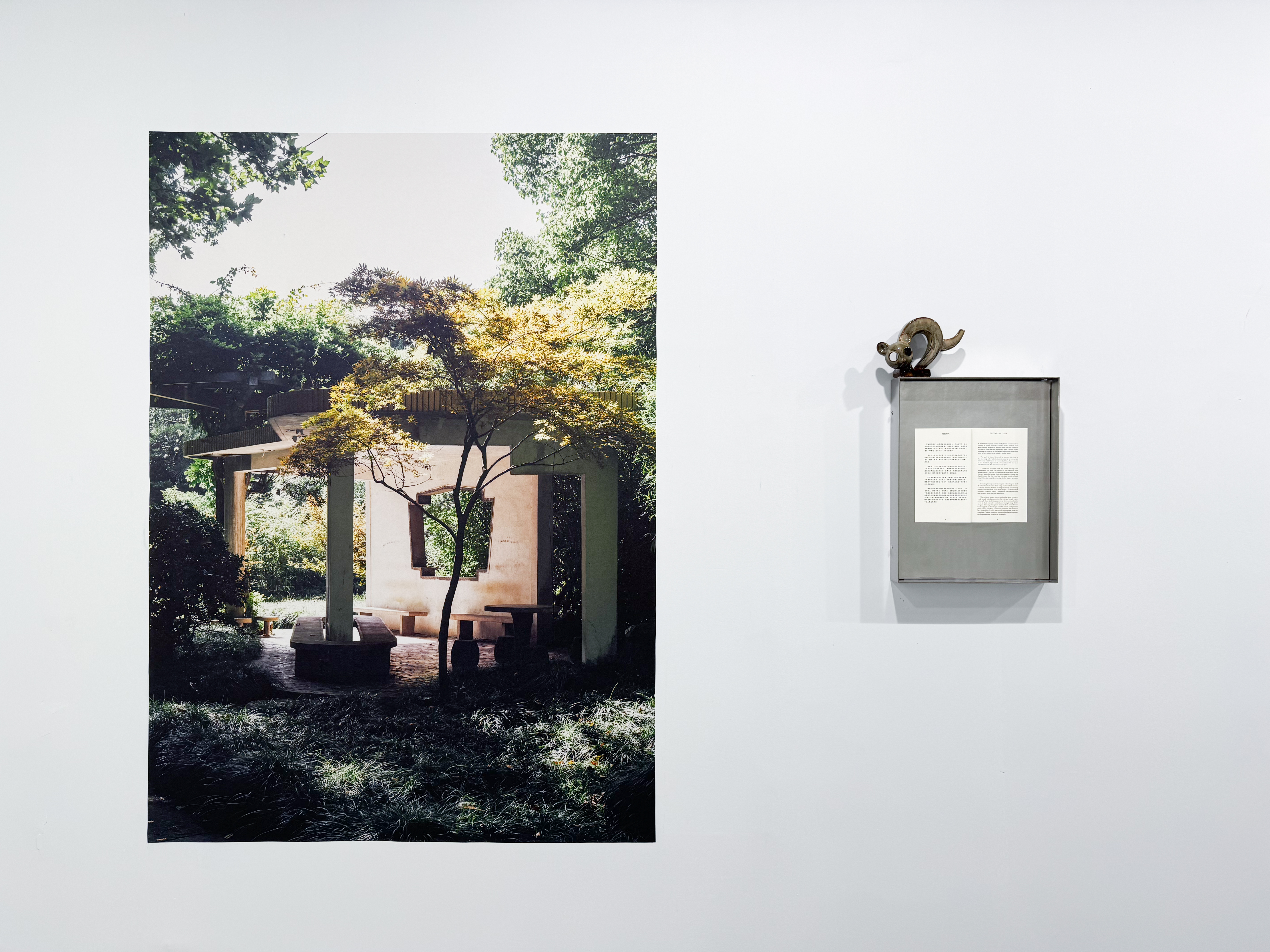
展览现场
短片《蝉鸣与六弦琴》中我邀请了一位朋友-实验即兴乐手徐程用一把50年代产于辽宁营口的六弦琴-也就是今天被称之为的“吉他”在公园中即兴演奏。黑白照片则来自于金山石化档案馆所慷慨提供的建设档案。在线性演奏的进程中,这一诞生于西方,仿制并演绎于本土的“声音”和应着金山石化乃至于本土现代工业发展的独特历史。
In the film "Cicadas and Six-String Guitar," I invited a improvisational musician Xu Cheng, to play a six-string guitar produced in Yingkou, Liaoning Province in the 1950s—what is now commonly known as a "guitar"—in the park. Interspersed with these scenes are black-and-white photographs from the construction archives provided by the Jinshan Petrochemical Archives. As the musician plays, this sound, born in the West and imitated and interpreted in China, resonates with the unique history of Jinshan Petrochemical and modern industrial development in China.
点按下图观看影片|Click image below to watch the video
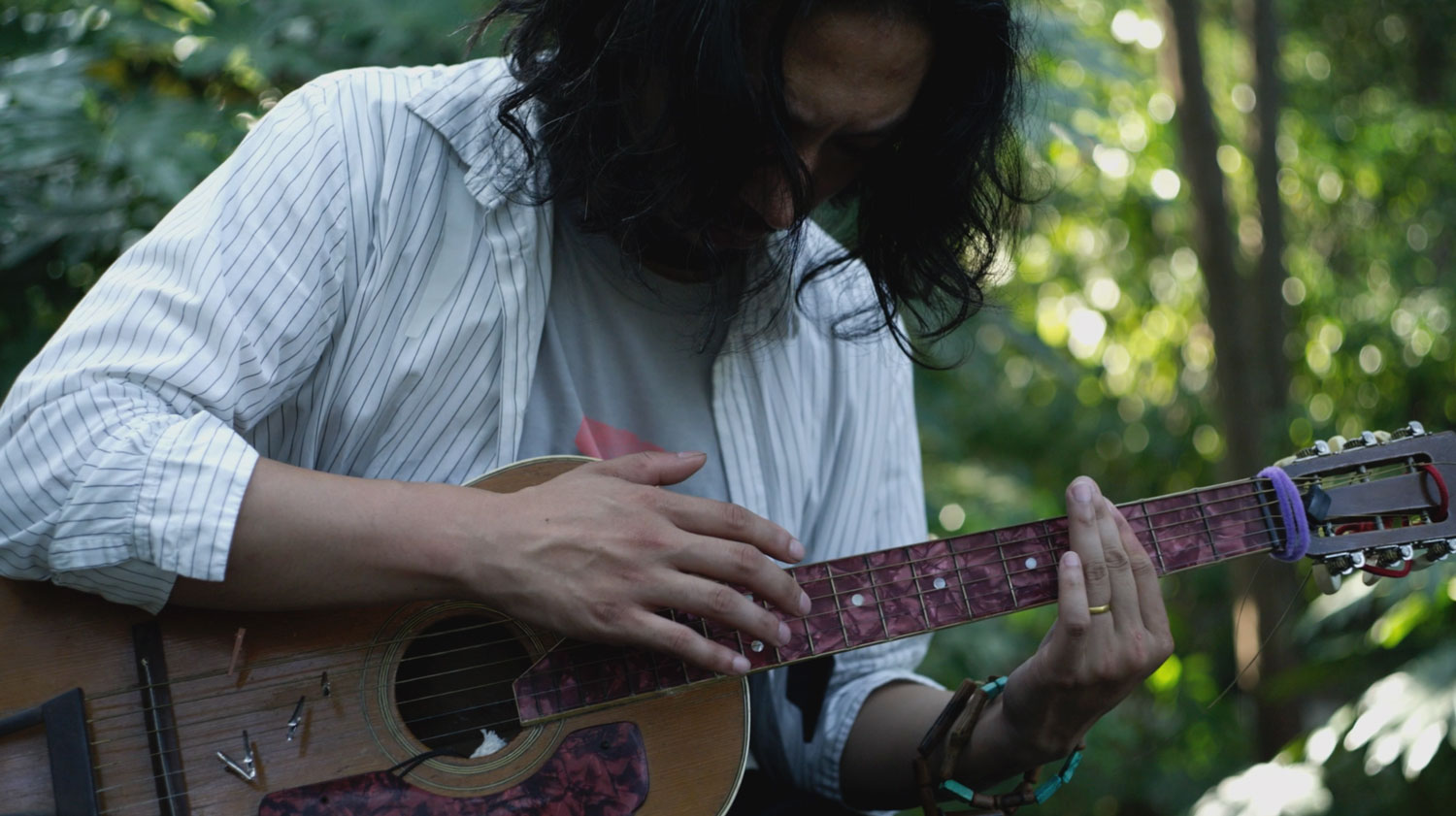
影片截图2

影片截图3
在这一项目中 “金” 作为对那些珍贵之物的喻体被我再一次拾起,指认的是一种正面意义上的充满希望的乌托邦愿景。而这一愿景借由“社会主义工厂”、“工人新村”甚至如“记忆”等这些笼统而概括的语汇成为了挥之不去的时代幽灵。他们不时的在我们身旁显现,如阿基拉尔(Prudencio Aguilar) 般手捂伤口,无声的纠缠着创造它的人。
-----------------------------------------------------------
阿基拉尔(Prudencio Aguilar)为小说《百年孤独》中的一位角色,在被何塞.阿尔卡蒂奥.布恩迪亚杀死后成为了幽灵,终日游荡在其家中。最初的恐惧化为了内疚与不安使得布恩迪亚最终决意与妻子及朋友一同离开,去寻找一个有海的地方。
In this project, "gold" is once again picked up as a metaphor for precious things, referring to a positive and hopeful utopian vision. This vision, embodied by vague and general terms such as "socialist factory," "workers' village," and "memory," has become a lingering ghost of the times. They appear from time to time beside us, like Prudencio Aguilar clutching his wounds, silently entangled with the people who created him.
------------------------------------------------------------
Prudencio Aguilar is a character in the opening of the novel One Hundred Years of Solitude. After being killed by the male protagonist, he becomes a ghost who haunts his home. The initial fear transforms into guilt and unease, ultimately driving José Arcadio Buendía to decide to leave with his wife and friends in search of a place by the sea.
